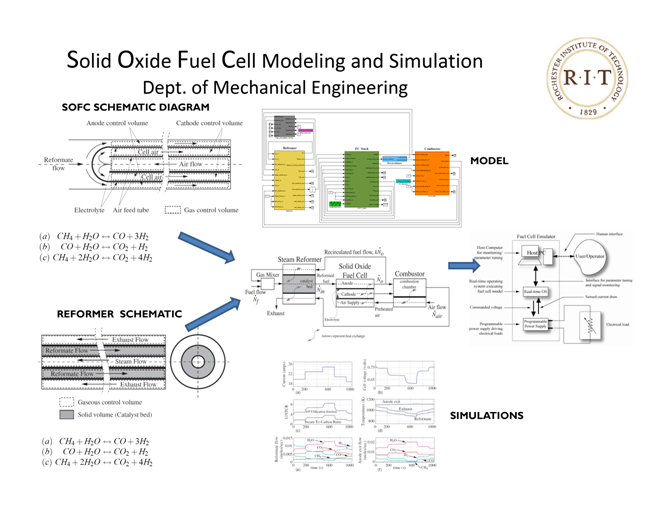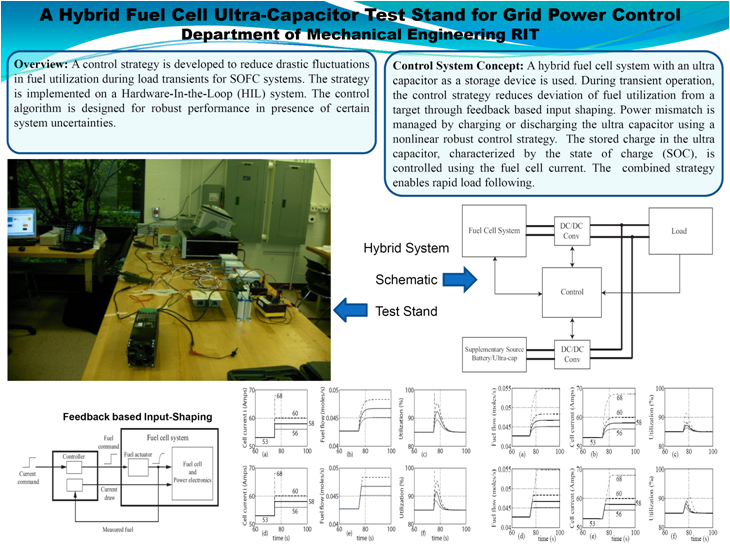Sponsors
Energy Systems Research
Energy Systems Modeling
- Development of detailed mathematical models of reformer based SOFC (Solid Oxide Fuel Cell) systems.
- Development of a hierarchical arrangement of model libraries that facilitates simulation with different fuels (methane, JP8, etc.), reformers (Steam Reformer, Partial Oxidation Reformer, Auto-thermal Reformer) and stack technologies (Planar, Tubular SOFC).
- Development of storage element models (Ultra-capacitor, Li-Ion, Lead-acid) and renewable energy system (wind-turbine system) models.
Real-time Simulation and Energy System Emulation
- Enables control verification
- Enables hardware-in-the-loop system development
Fuel cell characterization and optimization
- Transient characteristics are critical in control design for fuel cell based power plants.
- Leads to prediction of transient behaviors with varied time scales and extraction of steady state properties.
- Systems analysis also enables fuel optimization.
- Model independent characterization and derivation of invariant properties of a class of reformer based SOFC systems.
 |
Control of Hybrid Fuel Cell Systems
- Hybridization of SOFC with ultra-capacitors and Li-Ion batteries are explored.
- Optimal load-sharing between fuel cell and battery/super-capacitor is necessary to prolong stack life and improve transient load-following capability.
- Control designs that address stack-life, SOC control for energy storage devices, etc. simultaneously, are pursued (e.g. robust nonlinear control, H-infinity control, etc.)
 |
Plasma-based fuel reformers
- Plasma based reforming techniques has the potential for providing better energy efficiency of hydrogen production from hydrocarbons.
- Modeling and system dynamics of plasma based reformers are explored.
Observer designs for SOFC systems
- Accurate system information requires species concentration measurement in various control volumes throughout the fuel cell system.
- Observer designs reduce the number of concentration sensors required for control.
- The designs exploit steady-state properties of the system and/or employ adaptive parameter estimation techniques.





